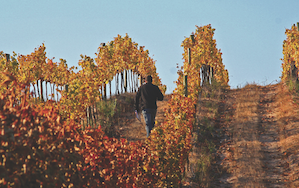Chile, like Diageo and Manchester United, just seems to keep going from strength to strength. Nothing appears to get in the way of its progress. Fortunately for the South American producer, it doesn’t have a sole leader so, it doesn’t have to worry about the likes of Paul Walsh and Sir Alex Ferguson moving on.
While Diageo and United face slightly uncertain futures as their defiant, indefatigable leaders step down, Chile just has to worry about the strong peso and where to sell its wines next as established, mature markets – primarily in Europe – flatline economically.
The Chileans, being the Chileans, worry – but need they? Felipe Bravo, area manager for Europe at the VSPT Wine Group (San Pedro Tarapacá, Santa Helena, Misiones de Rengo, Leyda, Altair, Vina Mar, Casa Rivas and La Celia and Tamari), says: “After years of growth the Chilean wine industry is starting to feel the pressure of: the economic crisis our main buyers from Europe are facing; incredible higher costs of labour, electricity and raw materials; and a challenging US dollar/Chilean peso exchange rate.
“As a result, in 2012 our bottled goods segment closed the year with similar figures to 2011, showing almost no growth. Regarding markets, shipments to nine out of the 20 most important ones declined both in volume and value with a higher impact in the two major ones, the US and the UK which together account for 28% of the value and 32% of Chile’s exported volume,” he says.
Fastest growing
The fastest growing countries are China, Brazil and Japan, with the latter two pushing the Netherlands down to fifth. The average price decreased in 10 of the 20 major export countries, particularly Europe. The one exception was the UK, which grew 2%, according to Bravo.
Matetic Vineyards general manager Arturo Larrain is equally pessimistic. He tells Drinks International: “My perception is that 2013 will be a difficult year for Chilean industry – rising costs of labour and energy, very strong Chilean peso against the dollar and week demand from Europe, our number one export region in the world. Having this in mind, we will continue our strategy to focus on Asian markets, Canada, US, Brazil and also the domestic market.
“Chile must focus on producing quality wines but also to educate consumers about our potential to produce high-quality wines and not only value wines. Chile is all about diversity. We are able to produce from top-quality Sauvignon Blanc to red varieties such as Pinot Noir to Cabernet Sauvignon,” says Larrain.
Carolina Wine Brands is one of Chile’s main winemaking groups. It is part of the Watt’s SA agroindustrial group. It manages 2,000ha of vineyards in Chile’s Maipo, Casablanca, Colchagua and Curicó valleys, as well as seven winemaking facilities. Carolina owns five Chilean brands, the main one being Santa Carolina, with boutique winery Casablanca, Ochagavía, Vistaña and Antares.




